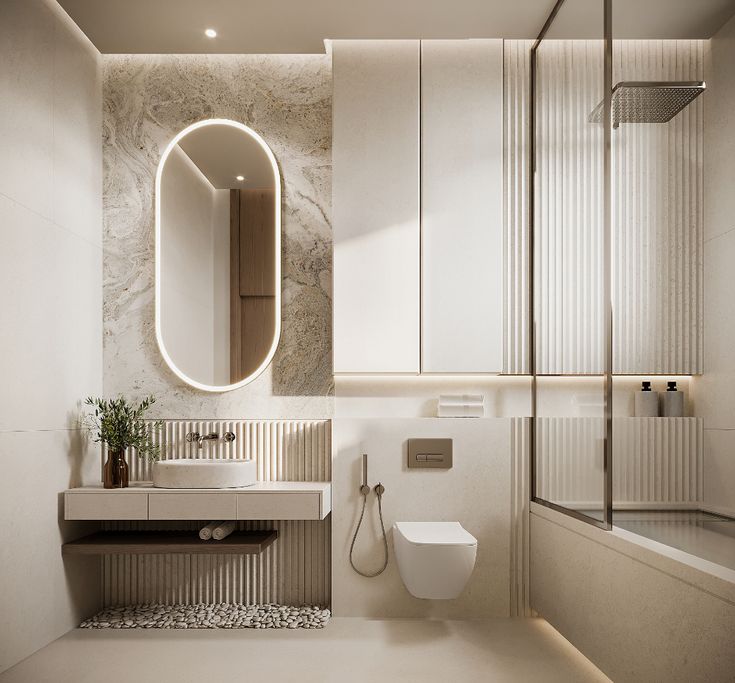
If your bathroom smells bad or you’re worried about foul odor developing in your new or renovated bathroom—you’re not alone. Many homeowners spend lakhs on beautiful interiors but miss out on small technical details that lead to long-term smell and drainage issues.
In this blog, we’ll break down 11 practical bathroom design tips that professional interior designers (including us at 91homes) use to ensure the bathroom always smells fresh and functions perfectly. Whether you’re building, renovating, or fixing an existing bathroom—this guide is for you.
1. Always Use Separate Pipes for Grey Water and Black Water
One of the biggest design mistakes is using the same drainage pipe for:
Grey water (from wash basins and showers)
Black water (from WC/toilet)
When both are connected, the foul smell from WC flows back into the shower and basin areas—even if you’ve installed traps. The solution? Always install two separate drain pipes—one exclusively for toilets and another for wash basins and showers.
2. Use a Nahani Trap – Not Just Any Trap!
Nahani traps are essential under shower areas. Their job? Trap a small amount of water at all times, which acts as a barrier and stops smell from coming back up. But make sure:
It’s installed at a 90° flat angle
It always has water inside (check visually if needed)
If water isn’t staying at the correct level, smells will leak back.
3. Use the Right Glue While Connecting Pipes
Another unseen mistake: using yellow glue meant for white pipes in the grey underground pipes. This glue wears off quickly and causes leakage. Always insist your plumber use white or grey glue for underground drainage lines.
4. Avoid Murram & Debris Under Bathroom Flooring
After laying the pipes, many masons use murram or construction debris as filler before placing tiles or marble. This material traps moisture, leading to a damp smell that never goes away.
The Fix:
Use khangar (stone chips) as the first filler
Lay a PCC (Plain Cement Concrete) layer 1.5-2 inches thick
Then install tiles or marble
This keeps moisture from settling under the flooring.
5. Never Use Ceramic Tiles for Flooring
Ceramic tiles absorb moisture and fade over time, which keeps your bathroom constantly damp.
Instead:
Use Vitrified Tiles (strong, non-porous, best for wet floors)
Or Porcelain Tiles if you want stylish designer options
How to identify them?
Flip the tile:
Greyish white back = Vitrified
Reddish-orange back = Ceramic (Avoid!)
6. Maintain the Right Floor Slope
Improper slope = water pooling = smell.
Ideal Slope Ratio:
For every 50 mm of tile length, floor should slope down by 1 mm.
For example, if your shower zone is 1800 mm long (6 feet), it should slope down by 36 mm.
Simple Slope Test:
Place a marble or glass bead on the floor. If it rolls to the drain, slope is perfect.
Also, always use 2×2 ft tile size for flooring to ensure even slope. Larger tiles make slope maintenance harder and risk water pooling.
7. Always Use a Bottle Trap for Wash Basin
Avoid using flexible pipes under your wash basin—they trap debris and allow smell to rise.
Use a bottle trap, which:
Blocks smells from returning
Catches solid waste to avoid clogging
8. Don’t Skip the Gasket Behind WC
Toilet seats must be sealed with a gasket (rubber ring) at the joint between the WC and pipe. This ensures there’s no gap for smell or gases to leak out.
Check this during installation—don’t let your plumber skip it!
9. Install Exhaust at the Right Spot for Cross Ventilation
Exhaust placement is key. Install it on the opposite wall from the window to ensure proper air flow across the bathroom.
For Ceiling Exhausts:
Use a silver flexible duct
Ensure it has no more than 2 bends to avoid airflow blockage and back-smell
Use the chart below (from the video) to determine the correct exhaust fan size based on your bathroom’s square footage.
10. Don’t Overlook the Ceiling Exhaust Ducting
Poorly installed ceiling exhaust ducts with many twists and bends slow down air exit speed. Over time, this causes smell to build up and return from the duct itself.
Tips:
Keep duct path as straight as possible
Limit to 2 bends
Use a powerful fan if the duct is long
11. Bonus Tip: Add Aroma Sticks for Natural Freshness
Even if your ventilation is perfect, a subtle fragrance makes a huge difference.
Place aroma sticks or reed diffusers near the basin area. They’re affordable, long-lasting, and give your bathroom a spa-like vibe without overwhelming the senses.
Final Thoughts: Your Bathroom Should Look and Smell Like a Dream
Interior design isn’t just about looks—functionality and hygiene are equally important. Whether you’re planning a new bathroom or renovating an old one, these expert-backed tips will help you avoid all the mistakes that lead to permanent bathroom smells.
